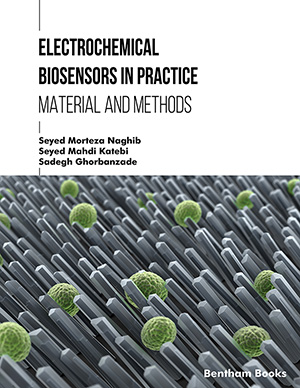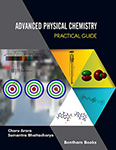
Abstract
Background: Dihydrofurocoumarins are a large family of compounds, among them, dihydroangelicins and dihydropsoralens, are present in various plant species with varied biological activity. Several strategies have been developed for synthesizing these compounds and various catalysts have been used for this purpose.
Methods: In this work, we report the synthesis of 8,9-dihydrofuran [2, 3-h] coumarins using allyloxycoumarin cycloaddition in sustainable conditions: absence of solvents, application of microwave radiation, and insoluble acid catalysis by means of heteropolyacids with Preyssler structure, [H14(NaP5MoW29O110)]. Conclusion: With these conditions, and testing sustainability by means of Eco-Scale and E-factor, we replace the use of solvents and mineral acids having a great impact on the environment with a solid, easily recoverable heteropolyacid.Keywords: Dihydroangelicins, dihydrofurocoumarins, microwave radiation, green chemistry, heteropolyacid, Preyssler structure.
Current Green Chemistry
Title:A Solvent-free Method for Synthesis of Dihydroangelicins using Microwaves
Volume: 3 Issue: 3
Author(s): Diego M. Ruiz, Juan C. Autino and Gustavo P. Romanelli*
Affiliation:
- Centro de Investigación en Sanidad Vegetal (CISaV), Facultad de Ciencias Agrarias y Forestales, Universidad Nacional de La Plata, Calles 60 y 119, B1904AAN La Plata, Buenos Aires,Argentina
Keywords: Dihydroangelicins, dihydrofurocoumarins, microwave radiation, green chemistry, heteropolyacid, Preyssler structure.
Abstract: Background: Dihydrofurocoumarins are a large family of compounds, among them, dihydroangelicins and dihydropsoralens, are present in various plant species with varied biological activity. Several strategies have been developed for synthesizing these compounds and various catalysts have been used for this purpose.
Methods: In this work, we report the synthesis of 8,9-dihydrofuran [2, 3-h] coumarins using allyloxycoumarin cycloaddition in sustainable conditions: absence of solvents, application of microwave radiation, and insoluble acid catalysis by means of heteropolyacids with Preyssler structure, [H14(NaP5MoW29O110)]. Conclusion: With these conditions, and testing sustainability by means of Eco-Scale and E-factor, we replace the use of solvents and mineral acids having a great impact on the environment with a solid, easily recoverable heteropolyacid.Export Options
About this article
Cite this article as:
Ruiz M. Diego, Autino C. Juan and Romanelli P. Gustavo*, A Solvent-free Method for Synthesis of Dihydroangelicins using Microwaves, Current Green Chemistry 2016; 3 (3) . https://dx.doi.org/10.2174/2213346104666170224101037
| DOI https://dx.doi.org/10.2174/2213346104666170224101037 |
Print ISSN 2213-3461 |
| Publisher Name Bentham Science Publisher |
Online ISSN 2213-347X |
Call for Papers in Thematic Issues
Green Concepts for Modern Organic Synthesis
The 'green revolution', which is literally happening before our eyes and affecting every aspect of life, also poses increasingly difficult challenges in the field of chemical synthesis. New solutions and ideas aimed at environmental protection while taking into account the principles of sustainable development are still desired. In this context, ...read more
Green Thermochemical Processes for Hydrogen Production: Circular Economy Approach
The special issue “Green Thermochemical Processes for Hydrogen Production: Circular Economy Approach” welcomes research, reviews, and mini-review papers focusing on the study and development of thermochemical processes for the valorization of byproducts, wastes, wastewaters, and biomass to hydrogen in a green and sustainable way. Topics, such as processes driven by ...read more
Recent Advances in Green Catalysis and Drug Discovery
To save our loving ‘Mother Nature’ from the ever-increasing chemical pollution, scientists are continuously modifying chemical processes to make them sustainable. As a result, the last decade has shown a tremendous outburst in modifying organic transformations by following green chemistry. Catalysts play an important role in organic transformations. The involvement ...read more
Sustainable Biotechnology in Pharmaceuticals: Green Approaches and Innovations
The special edition "Sustainable Biotechnology in Pharmaceuticals: Green Approaches and Innovations" highlights how biotechnology can revolutionize the industry by creating environmentally friendly solutions to address growing environmental concerns in ways that minimize resource use and waste while decreasing emissions. This edition features studies on biocatalysis and sustainable bioprocessing methods using ...read more
 34
34 1
1
- Author Guidelines
- Graphical Abstracts
- Fabricating and Stating False Information
- Research Misconduct
- Post Publication Discussions and Corrections
- Publishing Ethics and Rectitude
- Increase Visibility of Your Article
- Archiving Policies
- Peer Review Workflow
- Order Your Article Before Print
- Promote Your Article
- Manuscript Transfer Facility
- Editorial Policies
- Allegations from Whistleblowers
- Announcements
Related Articles
-
Environmental Exposure, and Other Behavioral Risk Factors in Breast Cancer
Current Cancer Therapy Reviews Editorial [Hot Topic:Preamble: CDC25 Phosphatases in Cancer and CDC25 Inhibitors (Guest Editor: Gregoire Pierre Prevost)]
Anti-Cancer Agents in Medicinal Chemistry Radioiodinated Agents for Imaging Multidrug Resistant Tumors
Medicinal Chemistry Identifying Molecular Targets Mediating the Anticancer Activity of Histone Deacetylase Inhibitors: A Work in Progress
Current Cancer Drug Targets New Use for Old Drugs? Prospective Targets of Chloroquines in Cancer Therapy
Current Drug Targets Mechanisms of Viral Hepatitis Induced Liver Injury
Current Molecular Medicine Role of MicroRNA in the Diagnosis and Therapy of Hepatocellular Carcinoma: A New Frontier
MicroRNA The Metastatic Process: Methodological Advances and Pharmacological Challenges
Current Medicinal Chemistry An Overview of Medicinal Importance, Pharmacological Activities and Analytical Aspects of Fraxin from <i>Cortex fraxinus</i>
Current Traditional Medicine Tankyrases: Structure, Function and Therapeutic Implications in Cancer
Current Pharmaceutical Design Targeting Prenylated RAS Modifying Enzymes in Cancer Cells
Current Signal Transduction Therapy New Molecular Targets of Anticancer Therapy – Current Status and Perspectives
Current Medicinal Chemistry NAD in Skin: Therapeutic Approaches for Niacin
Current Pharmaceutical Design Potential Targets in Constipation Research: A Review
Current Drug Targets Reversing Aberrant Methylation Patterns in Cancer
Current Medicinal Chemistry Liposomal Nanotechnology for Cancer Theranostics
Current Medicinal Chemistry Biology of PPARγ in Cancer: A Critical Review on Existing Lacunae
Current Molecular Medicine Cathelicidins: Peptides with Antimicrobial, Immunomodulatory, Anti- Inflammatory, Angiogenic, Anticancer and Procancer Activities
Current Protein & Peptide Science Role of Graphene Nano-Composites in Cancer Therapy: Theranostic Applications, Metabolic Fate and Toxicity Issues
Current Drug Metabolism Delineation of Current Development of Antimitotic Compounds Targeting Cytoskeletal Protein Tubulin and Microtubule in the Cancer Therapy
Current Chemical Biology
















